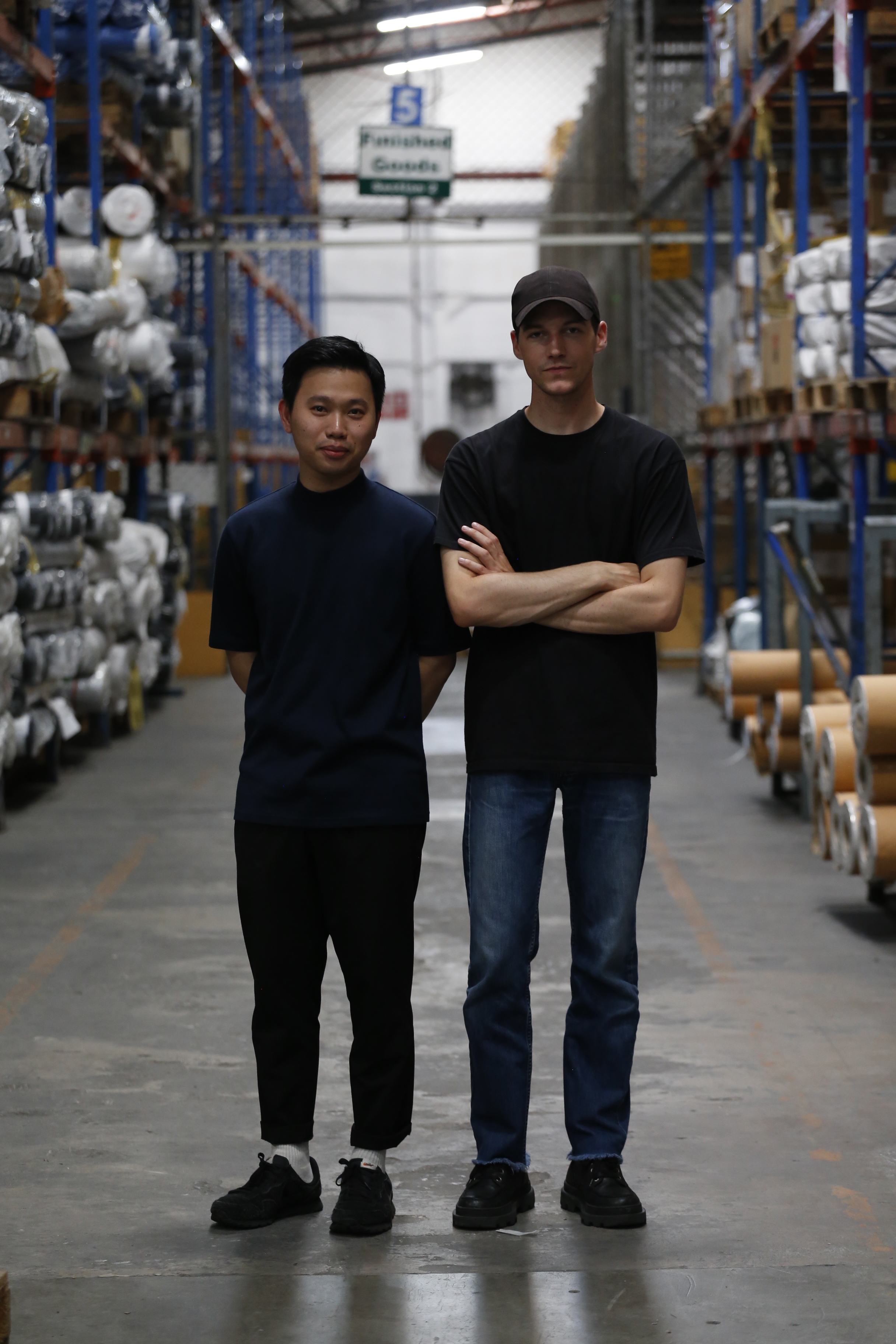Proving waste's worth
Up-cycled jacquard sleeveless trench from the R Collective trailblazer collection launched exclusively at Barneys New York
Written by Bel Jacobs
Last year, a fashion brand was unveiled that aimed to challenge every aspect of conventional fashion production: from perceptions of waste textiles to the methods of cutting and making; from conceptual notions of design to the definition of resources. Located in Hong Kong, in the very heart of the world’s fashion production powerhouses, The R Collective, brainchild of Redress Founder, Christina Dean, is shaking fashion’s foundations to its core.
“The inspiration behind The R Collective was to prove that fashion could be re-imagined as a force for good, and that sustainable fashion deserves its place on our rails,” says The R Collective Co-Founder Christina Dean, proudly. “Most importantly, we wanted to put all Redress’ educational and advocacy work into practice. We wanted to build the vision for what we believe in.”
Fashion is a profligate industry. Every year, billions of metres of new textiles are produced - and every year millions of metres are discarded almost untouched during production through sampling and the cut and sew process. The fashion industry’s total annual textile waste stands at a whopping estimated 92 million tons.[1] That’s a lot of raw materials, chemicals, energy and paid man-hours ending up in incineration or landfill.
For the past 8 years, the Redress Design Award has been educating, supporting and celebrating young sustainable designers in the art of conscious up-cycling - using industry and consumer waste to create beautiful clothes. The R Collective is the next step in that journey, working with some of these designers to show the rest of the industry that sustainable clothes can work, aesthetically, technically and commercially.
Victor Chu & Kévin Germanier were the designers behind the R Collective's inaugural collection
Created by emerging designers Kévin Germanier and Victor Chu, 2014/15 first and second prize winners respectively, the inaugural collection turned rescued lightweight wool, crepe and denim from luxury brands into classic blazers, trench coats and biker jackets with uniquely playful twists, including a capsule of masterfully crafted pieces using rescued luxurious brocades. The collection was snapped up by both Lane Crawford, Hong Kong and Barneys New York.
A second range showcased the playful, pop art-inspired knitwear of emerging British designer Kate Morris, winner of the Redress Design Award 2017. Reversible coatigans, sweaters and turtlenecks were created by up-cycling top quality yarn waste in collaboration with luxury knitwear brand 22 Factor.
The most recent partnership is with Redress Design Award 2017 Second Prize, Special Prize and People’s Choice Winner Lia Kassif. “For this collection, we took post-consumer military waste (ex-military uniforms from Israel, the US and China), and turned them into powerful, iconic pieces,” says Christina. The collection is now available exclusively in Lane Crawford, Hong Kong and Shanghai.
“Through the partnership with Redress, our sister charity, we have this incredible window into the world of best talent,” she says. Later this year, the brand will launch its first in-house collection: “The vision is to create a capsule of high quality, wearable, durable clothes that will become foundation pieces onto which our most exciting product drops can be styled against.”
The brand's latest collection applies the reconstruction design technique to military uniforms
It’s been an adventure: “The reconstructed collection with Lia was the biggest labour of love. It was so challenging but just brilliant in its scope…” she says. “It’s a problem we all need to solve - how to redesign old clothes to keep them in service. We’re delighted with ours. We’ve proved there’s a market for deconstruction but we’re constantly learning. These are uncharted waters. That’s why few people are doing it - and exactly why we decided to do it.”
The challenge is working with waste materials, which arrive with The R Collective in a breathtaking variety of shapes, textures and sizes. “We take waste from luxury brands, from mills, from retailers. It’s waste they cannot get rid of and that’s on its way to landfill and incineration because it’s the wrong colour or the wrong thickness for the season. There are many companies out there doing their best to decrease waste, but there’s always a gap. That’s where we want to be.”
What is Christina’s hope for the label? “That The R Collective can be this daring, successful visionary brand,” she says, warmly. “And that people will fall in love with it and want to be part of pushing an ethical, environmental and social future for fashion. I’d love to enjoy it, as a collective and as a powerful vehicle to share our wildest hopes and dreams for something better.”
“Recently, I heard a quote that said, if you can’t find it, sometimes you have to build it for yourself,” she continues. “That’s what we’ve discovered. That’s what we’re doing.”
[1] Global Fashion Agenda and The Boston Consulting Group, Inc. (2017), Pulse of the Fashion Industry
This article originally appeared in the Redress Design Award 2018 Magazine.



